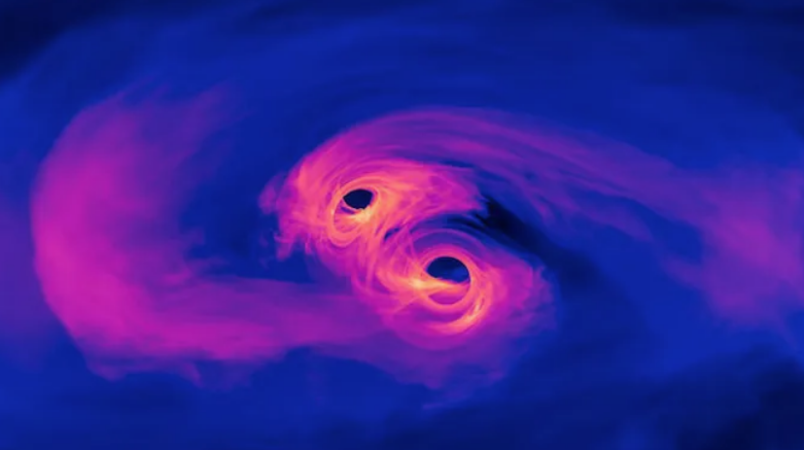Cosmic echoes from the universe’s most violent collisions are far more intricate than scientists previously understood, according to new research. When massive objects like black holes spiral inward and merge, they create tiny ripples in spacetime called gravitational waves, which resemble the lingering chime of a struck bell. Astronomers depend on theoretical models to interpret these faint signals, both in the moments just before the merger and afterward.
As the newly formed black hole stabilizes into a spinning shape, it emits a distinctive pattern of gravitational waves known as quasinormal modes (QNMs), which are influenced by the black hole’s mass, spin, and other properties.
Scientists expected these waveforms to fade predictably over time, similar to a bell’s chime. But in 1997, theorists noticed an odd exception: one QNM appeared out of sync, a puzzling anomaly unexplained by existing models. This hinted that QNMs might not evolve independently but interact in complex, nonlinear ways, suggesting black holes and their gravitational waves might be more complex internally than previously thought.
Building on this 30-year-old mystery, astrophysicist Hayato Motohashi of Tokyo Metropolitan University analyzed multiple QNMs and found the original “dissonance” was caused by interactions between two modes. Such interactions likely happen regularly among many modes, indicating they are fundamental to black hole physics.
This coupled cosmic ringing is more than a mathematical curiosity. Since gravitational wave signals reflect the geometry of the black hole’s surrounding spacetime fabric, studying these mode interactions could produce more precise “maps” of black holes. For example, a bell ringing slightly off-key can reveal cracks or imperfections; similarly, deviations in gravitational wave frequencies can indicate asymmetries or imperfections in a black hole’s shape. These irregularities, expected to fade over time but leaving a temporary mark on QNMs, might even reveal signs of new physics.
Motohashi concluded, “Our findings pave the way for rigorous examinations of black holes and the exploration of new physics in gravity.”
This research was published April 9 in the journal Physical Review Letters.

